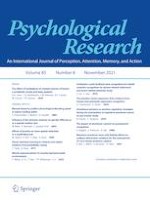03-01-2021 | Review
The effect of handedness on mental rotation of hands: a systematic review and meta-analysis
Gepubliceerd in: Psychological Research | Uitgave 8/2021
Log in om toegang te krijgenAbstract
Body-specific mental rotation is thought to rely upon internal representations of motor actions. Handedness is a source of distinctly different motor experience that shapes the development of such internal representations. Yet, the influence of handedness upon hand mental rotation has never been systematically evaluated. Five databases were searched for studies evaluating hand left/right judgement tasks in adults. Two independent reviewers performed screening, data extraction, and critical appraisal. Eighty-seven datasets were included, with 72 datasets pooled; all had unclear/high risk of bias. Meta-analyses showed that right-handers were faster, but not more accurate, than left-handers at hand mental rotation. A unique effect of handedness was found on performance facilitation for images corresponding to the dominant hand. Meta-analyses showed that right-handers were quicker at identifying images of right hands than left hands—a dominance advantage not evident in left-handers. Differing hand representations (more lateralised hand dominance in right-handers) likely underpin these findings. Given potential differences between hand preference and motor performance, future research exploring their distinct contributions to mental rotation is warranted.
